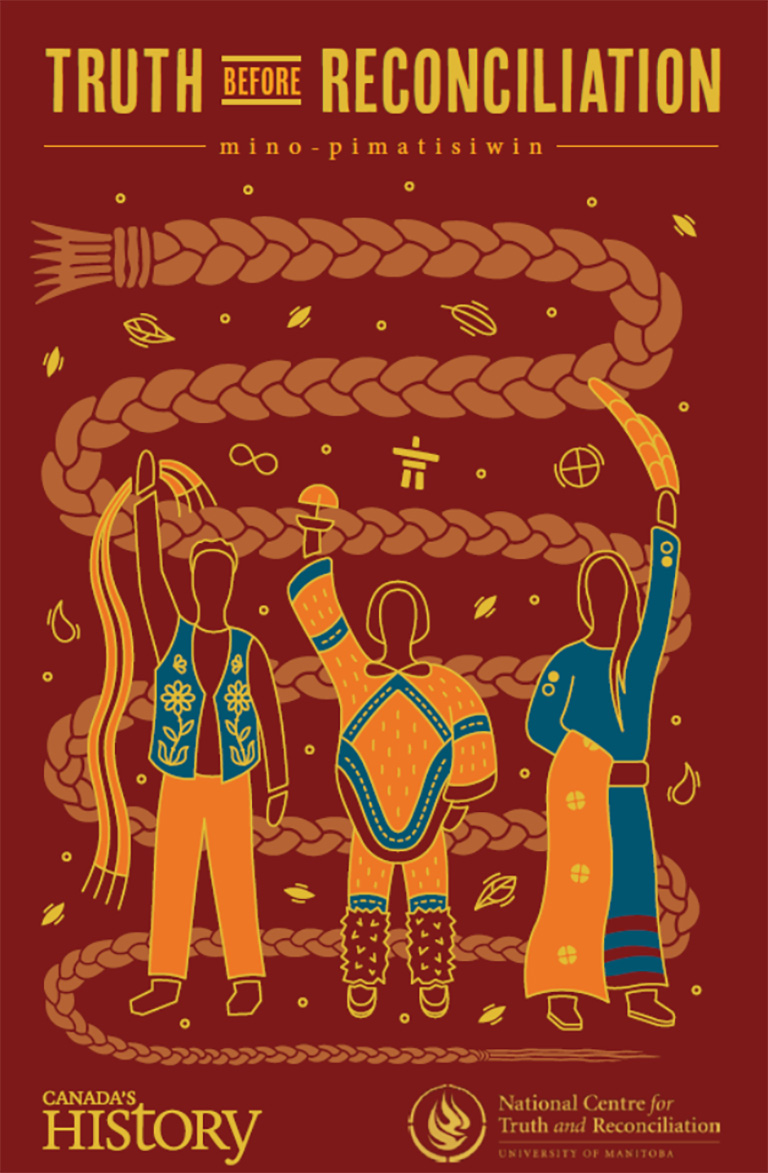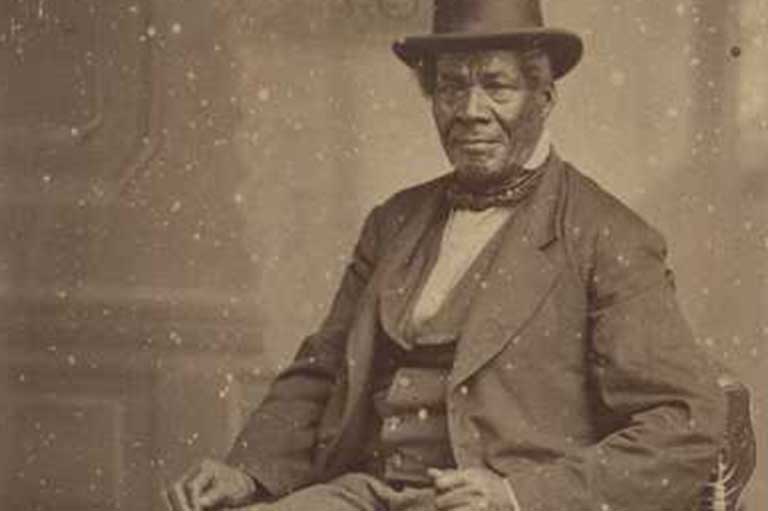
Mino-pimatisiwin: Living the Good Life Canada’s National History Society with the National Centre for Truth and Reconciliation
|
Students will learn about the United Nations Convention on the Rights of the Child (UNCRC). They will learn about Residential Schools through age-appropriate stories and consider which rights children were denied through this system.
Students will:- Familiarize themselves with the rights outlined in the United Nations Convention on the Rights of the Child (UNCRC)
- Identify the difference between a right being upheld versus denied or broken
- Identify instances in literature about Residential Schools and which of the rights of children were denied
- Surmise the impacts of these rights violations on the children, their families, and their communities
- Reflect on their responsibilities and potential for upholding their own rights, as well as the rights of other children, particularly the rights of Indigenous children in Canada
|
Resources |
|
Background Information |
The United Nations Convention on the Rights of the Child (UNCRC) is an international treaty that outlines the civil, political, economic, social, and cultural rights of children. Adopted by the United Nations in 1990, the Convention recognizes children as individuals with their own rights and entitlements, rather than merely as dependents of their parents.
The UNCRC covers a broad range of rights, including the right to education, health care, protection from abuse and exploitation, and the right to participate in cultural and recreational activities.
Canada signed the UNCRC in 1991, committing to uphold and implement the rights of children as outlined in the Convention. However, Canada has faced criticism for not fully addressing issues related to Indigenous children, children in poverty, and children in the criminal justice system. |
Lesson Activity |
ACTIVATINGAs a class, read the message from Elder Harry Bone and Elder Florence Paynter on pages 4-5 of Mino-pimatisiwin: Living the Good Life. Explain that, through this message, the Elders have shared an important teaching. Have students reflect on the meaning of Mino-pimatisiwin and what it might mean for them to follow a good path.
Have students read page 10 of Mino-pimatisiwin and lead a conversation about the United Nations Convention on the Rights of the Child (UNCRC).
Brainstorm the rights you believe all children should have. Share a copy of the child-friendly version of the UNCRC from UNICEF. Have students determine how many of the articles are on this list from your brainstorm.ACQUIRINGAssign one or two of the UNCRC articles to each student or group and ask them to change the wording to “I statements” (for example, “I have the right to…”). We have suggested some articles in Appendix I that could be relevant and accessible for young learners. Students could make their statement into a poster or a slideshow, adding their own art or pictures. The teacher can first create and share a few as examples.- Discuss the statements with your students. Are there any that they do not understand?
- As a class, think of times when you saw a child’s right either being protected or not being upheld. This could be a fictional example from a story or movie. Lead a conversation to explain the difference between a right being upheld and a right being denied. Encourage students to share their feelings and to pay attention to the role of the adults around the child in each example.
Share some age-appropriate information about the history of Canada’s Residential School System. Some key points can include:- Residential Schools were government- and church-mandated institutions for Indigenous children operating from 1831 to 1996, created for the purpose of cultural assimilation.
- Indigenous children nationwide were forced to attend and taken away from their families.
- Many children suffered from abuse, neglect, malnutrition, and disease.
- Children were not allowed to speak their own language or practice cultural traditions.
- In 2015, the Truth and Reconciliation Commission of Canada published its final report and recommended 94 Calls to Action to advance reconciliation.
APPLYINGExplain to students that the UNCRC was created after Residential Schools were established in Canada. You can look at the timeline provided by the National Centre for Truth and Reconciliation and show where the UNCRC fits in.
Recognize that this activity requires applying a contemporary lens to a historical event. We are looking at Residential Schools, which existed in the past, through our “glasses” of today and with our understanding of the UNCRC and the extent to which these institutions were founded on racist ideas and goals. Our ideas about human rights have evolved since the Residential School System was founded, in large part due to the actions and efforts of individuals who worked to expose the system and affect change. It is important to understand and recognize past injustices, so we can prevent similar mistakes in the future.
Divide the class into small groups and give each an age-appropriate book about Residential Schools. (There is a list of suggestions below.) As each group reads their story, have them use a chart to record which of the rights of the child were denied as evidenced in the story. Encourage students to also look for examples of the rights of the child being upheld or protected (by the children’s family, for example, and only if applicable).- Have the groups report their findings back to the larger group.
- Lead a discussion with the students. Explain that while the stories are works of fiction, they are based on true events and true experiences. In thinking about the children who attended Residential Schools, what do you think the impacts of having their rights denied would have been on them, their family, and their community?
Have students reread the Elders’ message on pages 4 and 5 of Mino-pimatisiwin: Living the Good Life.- Ask students how the concept of Mino-pimatisiwin is relevant to understanding and upholding the rights of children.
- Have students return to the UNCRC articles they investigated at the beginning of the lesson.
- Have students make a new poster titled “Mino-pimatisiwin,” with an image showing how they can uphold the rights of children in Canada.
|
Extension |
- What are Indigenous people, families, communities, and organizations doing to heal from the impacts of Residential Schools?
- How are Indigenous peoples fighting to ensure greater rights for children? (For example, Shannen’s Dream)
- Identify the rights that you have in your school and community by looking at policy statements, like a Code of Conduct. Turn these into “I statements” (for example, “As a student in this school, I have a right to…” or “As a child in this community, I have a right to…”); articulate steps you can take if one of your rights has been denied or broken.
- Research places in the world where children’s rights are not being protected. What can you do to help or raise awareness? Be sure to do this work alongside your students and ensure you are sharing age-appropriate information, as some content may be disturbing.
Suggested Publications about Residential SchoolsAges 4-8:- Amik Loves School: A Story of Wisdom by Katherena Vermette and illustrated by Irene Kuziw
- Muinji’j Asks Why: The Story of the Mi’kmaq and the Shubenacadie Residential School by Shanika MacEachern and Breighlynn MacEachern (Muinji’j), and illustrated by Zeta Paul
- Phyllis’s Orange Shirt by Phyllis Webstad and illustrated by Brock Nicol
- Shi-shi-etko by Nicola I. Campbell and illustrated by Kim LaFave
- Stolen Words by Melanie Florence and illustrated by Gabrielle Grimard
- The Train by Jodie Callaghan and illustrated by Georgia Lesley
- When I Was Eight by Christy Jordan-Fenton and Margaret Pokiak-Fenton, and illustrated by Gabrielle Grimard
- When We Were Alone by David Alexander Robertson and illustrated by Julie Flett
Ages 7-10:- I Am Not a Number by Jenny Kay Dupuis and Kathy Kacer, and illustrated by Gillian Newland
- Shin-chi’s Canoe by Nicola I. Campbell and illustrated by Kim LaFave
- The Secret Pocket by Peggy Janicki, and illustrated by Carrielynn Victor
Ages 9-12:- As Long as the Rivers Flow by Larry Loyie and Constance Brissenden, and illustrated by Heather Holmlund
- A Stranger at Home by Christy Jordan-Fenton and Margaret Pokiak-Fenton, illustrated by Liz Amini-Holmes
- Fatty Legs by Christy Jordan-Fenton and Margaret Pokiak-Fenton, and illustrated by Liz Amini-Holmes
- No Time to Say Goodbye: Children’s Stories of Kuper Island Residential School by Sylvia Olsen with Rita Morris and Ann Sam, and illustrated by Julia Bell and Connie Paul
Ages 12 and up:- My Name is Seepeetza by Shirley Sterling
- Secret Path by Gord Downie and illustrated by Jeff Lemire
|







